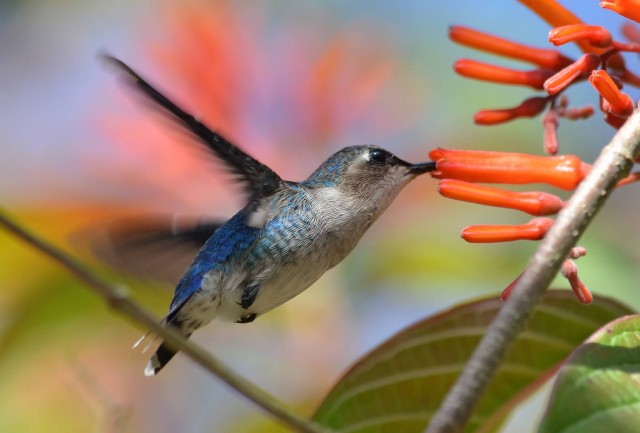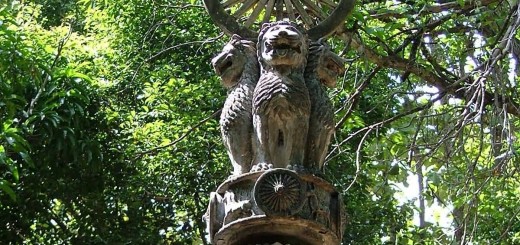8 Shortest Living Reptiles In The World

Brookesia Micra On A Match Head (Photo Credit: Frank Glaw, Jörn Köhler, Ted M. Townsend, Miguel Vences / CC BY 2.5)
Brookesia Micra
Brookesia micra (B. micra) is a species of chameleon from the islet of Nosy Hara in Antsiranana, Madagascar. As of 14 February 2012, it is the smallest known chameleon and among the smallest reptiles, small enough to stand on the head of a match. In length, adult Brookesia micra can grow up to 29 mm. The total body length of both of the sexes is less than 30 mm, ranking it among the smallest amniote vertebrates found anywhere in the world.
Compared to Brookesia minima, B. micra has a shorter tail and a larger head. Adults of B. micra also have orange tails, as opposed to an inconspicuous brown one. The size of the lizard may be linked to its habitat, due to insular dwarfism. They typically reside in leaf litter during the day and climb up into tree branches as high as 10 cm at night to sleep.

Juvenile Brookesia Micra On Finger Tip (Photo Credit: Frank Glaw, Jörn Köhler, Ted M. Townsend, Miguel Vences / CC BY 2.5)
Anchiornis
Anchiornis was small, feathered, eumaniraptoran dinosaurs. Anchiornis it was named in honor of Thomas Henry Huxley, an early proponent of biological evolution and the first to propose a close evolutionary relationship between birds and dinosaurs. The generic name Anchiornis means “near bird”. Anchiornis huxleyi fossils have been found in the Tiaojishan Formation of Liaoning, China, in rocks dated to the late Jurassic period.
Anchiornis huxleyi fossils have been found in the Tiaojishan Formation of Liaoning, China, in rocks dated to the late Jurassic period, 161.0–160.5 million years ago. Anchiornis huxleyi was a small, paravian dinosaur with a triangular skull. Anchiornis had very long legs, usually an indication that they were strong runners. Like many modern birds, Anchiornis exhibited a complex pattern of coloration with different colors in speckled patterns across the body and wings.

Anchiornis Huxleyi (Photo Credit: Nobu Tamura / CC BY 3.0)
Barbados Threadsnake
The Barbados threadsnake (Leptotyphlops carlae) is a species of blind threadsnake. It is the smallest snake species currently known to exist. It is endemic to the Caribbean island of Barbados. At the time of publication, August 2008, Barbados threadsnake was described as the snake species with the smallest adults in the world.
The first scientific specimens taken by the research team were found under rocks in a forest. The snake is thought to be near the lower size limit for snakes, as young snakes need to attain a certain minimum size to find suitable food. The average length of Leptotyphlops carlae adults is approximately 10 cm with the largest specimen found to date measuring 10.4 cm. The snakes are said to be “as thin as spaghetti”. L. carlae is thought to feed primarily on a diet of termites and ant larvae.

Barbados Threadsnake With Ruler (Photo Credit: Nicolas Perrault III / Public Domain)
Cuvier’s Dwarf Caiman

Cuvier’s Dwarf Caiman (Photo Credit: Nilfanion / CC BY-SA 3.0)
Cuvier’s dwarf caiman is a small crocodilian from northern and central South America. It is found in Bolivia, Brazil, Colombia, Ecuador, French Guiana, Guyana, Paraguay, Peru, Surinam and Venezuela. It lives in riverine forests, flooded forests near lakes and near fast-flowing rivers and streams. It is also known as the musky caiman, the dwarf caiman, Cuvier’s caiman and the smooth-fronted caiman.

Cuvier’s Dwarf Caiman (Photo Credit: Karelj / CC BY-SA 3.0)
Males grow to a maximum length of about 1.6 metres while females do not usually exceed 1.2 metres. Cuvier’s dwarf caiman is not only the smallest extant species in the alligator and caiman family, but also the smallest of all crocodilians. Cuvier’s dwarf caiman is mainly nocturnal. Adults feed on fish, amphibians, small mammals, birds, crabs, shrimps, molluscs and other invertebrates, which they catch in the water or on land.

Cuvier’s Dwarf Caiman (Photo Credit: Factumquintus / CC BY-SA 3.0)
Speckled Tortoise

Speckled Tortoise (Photo Credit: Matěj Baťha / CC BY-SA 3.0)
The speckled tortoise known locally as the speckled padloper and also known internationally as the speckled cape tortoise. It is the world’s smallest tortoise. It is endemic to South Africa and Southern Namibia. The male tortoise grow 6-8 cm while larger female grow upto almost 10 cm. This species has a flattened shell with slightly serrated edges. The orange-brown shell is covered in hundreds of black spots. The males have a noticeably concave belly.
This tiny tortoise can be distinguished from the other Homopus species by its speckles and by five toes on its forefeet. The species is threatened by traffic on roads, habitat destruction and poaching for the pet trade. As the trade in collected Homopus species is strictly illegal and any captive specimens are systematically registered in non-commercial studbooks in South Africa and Namibia, any commercial sale of Homopus tortoises is almost without exception strictly illegal.

Speckled Tortoise (Photo Credit: Abu Shawka / CC BY-SA 3.0)
Bee Hummingbird

Bee Hummingbird (Photo Credit: Rainer Jung / CC BY-SA 3.0)
Bee hummingbird is endemic to the entire Cuban archipelago, including the main island of Cuba and the Isle of Youth in the West Indies. It is found mostly in Cuba’s mogote area and uncommonly in Playa Larga near Zapata swamp. It is the smallest living bird with length 5–6 cm and weight 1.6–2 g. The male is smaller than the female. As the smallest bird in the world, it is no larger than a big insect and as its name suggests, is scarcely larger than a bee. Like all hummingbirds, it is a swift, strong flier. It also can hover over one spot like a helicopter.

Bee Hummingbird (Photo Credit: Ekaterina Chernetsova (Papchinskaya) / CC BY 2.0)
The brilliant, iridescent colors of the bee hummingbird’s feathers make the bird seem like a tiny jewel. The bee hummingbird feeds mainly on nectar and an occasional insect or spider, by moving its tongue rapidly in and out of its mouth. In the process of feeding, the bird picks up pollen on its bill and head. When it flies from flower to flower, it transfers the pollen. In this way, it plays an important role in plant reproduction. In the space of one day the bee hummingbird may visit 1,500 flowers.

Bee Hummingbird (Photo Credit: Ekaterina Chernetsova (Papchinskaya) / CC BY 2.0)
Baluchistan Pygmy Jerboa
The Baluchistan pygmy jerboa or the dwarf three-toed jerboa is a species of rodent in the family Dipodidae. It is endemic to Pakistan. In the 2010 Guinness World Book of Records, it was listed as tied for the smallest rodent in the world with the African pygmy mouse, but it is even smaller in dimensions and weight than African pygmy mouse.
This nocturnal jerboa progresses over a dry desert habitat by long hops, balancing itself on its tail while raising food to its mouth. They live in burrows generally excavated under small bushes. They feed on wind blown seeds and succulent leaves of desert adapted vegetation. The natural enemies of this jerboa are the leaf-nosed viper, the trans-Caspian monitor lizard and the sand cat.

Baluchistan Pygmy Jerboa (Photo Credit: Bell Pletsch / CC BY-SA 3.0)
Least Weasel

Least Weasel (Photo Credit: Bering Land Bridge National Preserve / CC BY 2.0)
The least weasel is the smallest member of the genus Mustela. It is native to Eurasia, North America and North Africa. Least weasels from various parts of its range vary greatly in size. The body is slender and elongated and the legs and tail are relatively short. The least weasel moves by jumping, the distance between the tracks of the fore and hind limbs being 18 to 35 cm. The least weasel feeds predominantly on mice, hamsters, gerbils and others. It usually does not attack adult hamsters and rats. Frogs, fish, small birds and bird eggs are rarely eaten.

Least Weasel (Photo Credit: Stormbringer76 / CC BY-SA 3.0)
Least weasels use pre-existing holes to sleep, store food and raise their young. Breeding takes place in the spring and summer and there is a single litter of about six kits which are reared exclusively by the female. Due to its small size, fierce nature and cunning behaviour, the least weasel plays an important part in the mythology and legend of various cultures.

Least Weasel (Photo Credit: Cecil Sanders / CC BY 2.0)















